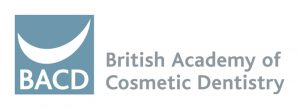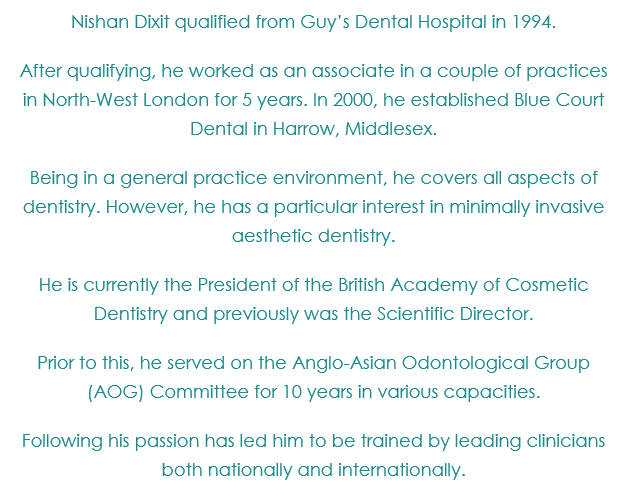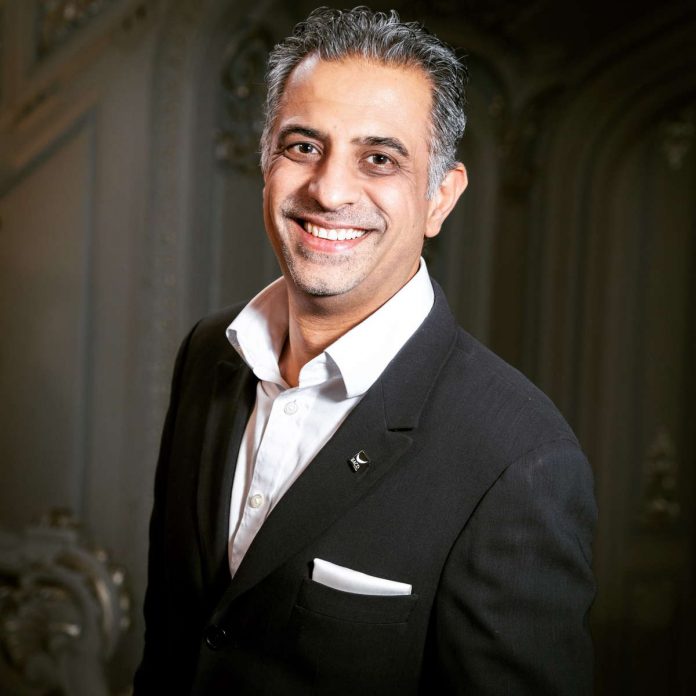Dr Nishan Dixit, President of the British Academy of Cosmetic Dentistry (BACD), explores how digital technology has revolutionised cosmetic dentistry, enabling people to improve the health and appearance of their smile.
There’s almost no area of modern life that hasn’t been impacted in some way by the advent of digital technology. Dentistry is no exception, with digital technology driving advances in the industry and improving the quality of care for patients. As dentistry has become more predictable, effective and long-lasting, the treatment options available to the modern-day patient have expanded. This has ensured greater choice with regard to oral health, leading to a rise in popularity of cosmetic dentistry.
There are now a variety of cosmetic dental treatments that can improve not only the function but also the aesthetics of your smile. This is reassuring for many people – especially if we consider that 40% of the UK population are unhappy with the appearance of their teeth, with nearly half planning to undergo cosmetic dental work in the future.[i] Many dentists will agree that there has never been a better time to consider cosmetic dentistry if you are looking to achieve the beautiful, healthy smile of your dreams.
Digital smile design (DSD)
DSD is one of the latest developments in dentistry. This involves planning treatment virtually on a computer screen to design a smile that fits the face. Essentially, dentists are able to restore missing, damaged, crooked, misaligned or discoloured teeth by creating a natural smile that complements your unique facial features.
DSD typically begins with the dentist using various digital technologies – including a 3D facial scanner – to take a series of high-resolution images and video footage of your smile and face. This data is then imported into a computer, where software can be used to analyse and redesign your smile. Your dentist will consider factors such as the ideal smile curve and lip line, as well as the shape, height, position and colour of the teeth and gums.
At this point, you can make adjustments to the design of your smile and preview it in virtual reality before treatment begins to ensure it is exactly how you imagine your new teeth to look. This ensures you are involved with your treatment from the very beginning, so that you have more control and are able to develop greater trust and confidence in your dentist. Furthermore, your dentist can use this digital data to discuss treatment with you in further detail, so that you are better informed about what’s involved and what you can expect.
Once your DSD has been finalised and approved by you, this information is then shared with a dental technician, who will create a physical mock-up or model of the design. This can then be tested in your mouth, enabling you to experience what your new smile will look and feel like. DSD ultimately helps ensure a predictable and patient-approved treatment process, whereby you are involved at each stage to make sure that the smile you will end up with is the one you envisioned for yourself in the first place.
CAD/CAM technology
Among the many other innovations that have transformed cosmetic dental procedures is CAD/CAM technology, which involves using computers to design and create top-quality dental restorations (e.g. dental crowns or bridges). CAD/CAM technology often combines digital scanning systems with state-of-the-art manufacturing software and equipment. This has significantly improved the speed, accuracy and ease with which restorations are made – whether in practice or through the services of a dental technician.
As a result, patients who are suitable for treatment no longer have to wait weeks at a time for crowns, veneers, dental implants or orthodontic appliances, including removable clear aligners. Dentists are able to use digital scanners to capture highly detailed images of the teeth and gums within seconds. These images can then be viewed on a chairside monitor for the purposes of detecting oral diseases such as tooth decay and helping you better understand your oral health. Your teeth can then be treated cosmetically as well as functionally to ensure that they perform properly.
Up until recently, patients who required a restoration had to endure the mess and discomfort of having gloopy impression material in their mouth, but this need is no longer the case in many situations, as it has been replaced with digital scanning technology. The latest digital scanners enable dentists to accurately and easily match the complex layers of colour in a natural tooth with the design of a restoration, so that the final result is as natural-looking as possible.
Beyond this, the production of dental restorations has improved to such an extent that a crown, for instance, can be milled or 3D printed in a matter of minutes. This can then be fitted in the mouth almost immediately. Teeth can be restored within a single visit to the practice, so that patients can walk away from an appointment with renewed confidence in their smile. By making procedures more efficient, convenient and comfortable, the latest CAD/CAM systems benefit both you and your dentist.
Driving new approaches
Digital technology and other cosmetic dental advances are driving new approaches to treatment. In fact, dentists are delivering more minimally invasive solutions, whereby as much of the natural tooth as possible is preserved to ensure long-lasting results with the least amount of discomfort for the patient. This offers an alternative to many traditional procedures, including amalgam fillings that are used to repair damaged or decayed teeth.
Made from a variety of different metals, amalgam has developed a poor reputation in recent years – not only for containing mercury, but also for its ability to darken the appearance of a tooth, making it look dull and grey, which can negatively impact aesthetics. Thankfully, dental composites provide another option. They are made from a combination of acrylic and ceramic and can be tailor-matched to blend beautifully with your existing teeth.
Besides offering an aesthetically-pleasing restoration, composites enable you to retain much of the natural tooth’s structure, as they don’t require your dentist to remove lots of tooth tissue first. This is not only more comfortable for the patient, but also ensures a long-lasting outcome with reduced risk of side effects due to minimal intervention. There are now a wide range of modern composite restorations available – including inlays, onlays and bridges – that can be used to repair damaged teeth, as well as reshape or change the colour of teeth.
A current trend is to combine composite treatments with other cosmetic dental procedures. For example, the ABB (align, bleach, bond) technique is very popular among many patients seeking to resolve minor problems such as crooked or stained teeth. This typically involves the dentist straightening the teeth with bespoke orthodontic treatment, before professionally whitening and applying composite material to correct minor irregularities. Of course, there are other options available for those with more complex problems.
Ultra-thin veneers, for instance, can be placed in a day to restore your smile with minimal removal of natural tooth tissue. You can also choose to restore unsightly gaps in your teeth with dental implants, which are becoming the preferred choice over traditional removable solutions such as dentures and bridges. Recent advances in implant dentistry have led to the development of sophisticated zirconia implants that provide a great option for patients looking to avoid having metal restorations in their mouths.
Top-class dental care
Innovative technology, materials and techniques are at the cutting-edge of modern cosmetic dental practises, which continue to improve the quality of life for many people. With greater access to a wide range of cosmetic dental procedures, patients must exercise caution. Afterall, there are some unqualified individuals who seek to capitalise on the success of the rapidly expanding cosmetic dental industry. While some treatments promising a quick fix at a low cost may appear beneficial, being able to trust someone with the health and appearance of your smile is far more important than saving time or money.
Therefore, it is vital to do your research and seek out the services of a registered dentist with extensive skills, knowledge and experience. As a world-leading authority on cosmetic dentistry, the BACD is committed to excellence and improving standards within the field. Full and accredited members of the BACD are passionate and dedicated to delivering consistently safe, ethical and top-class cosmetic dentistry. They believe in following a minimally invasive approach, using the most advanced technologies and techniques to achieve maximum function and aesthetics.
By seeking treatment from a BACD dentist, you can be confident that you will receive the highest quality care from a professional who can deliver the results you want in a comfortable, pain-free way.

For further enquiries about the British Academy of Cosmetic Dentistry, visit www.bacd.com

[i] Cosmetic Surgery Solicitors. (2018) 2 in 5 Brits are ‘unhappy’ with their teeth. Link: https://www.cosmeticsurgerysolicitors.co.uk/news/2-5-brits-are-unhappy-their-teeth. [Last accessed: 29.01.20].







